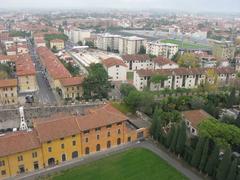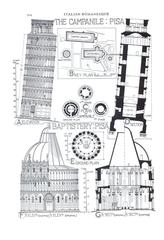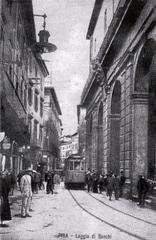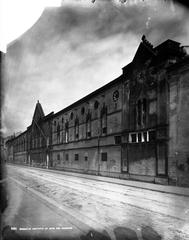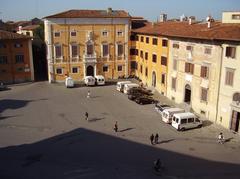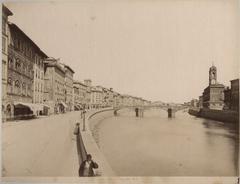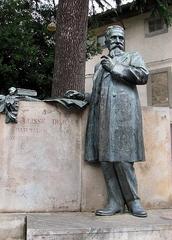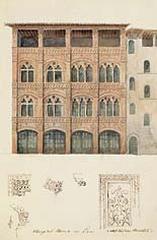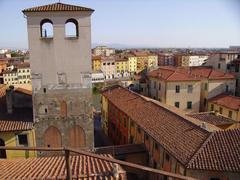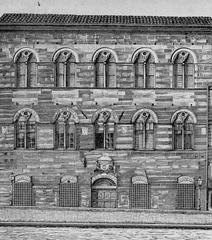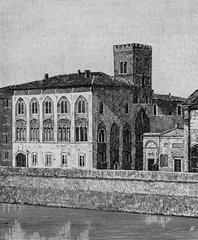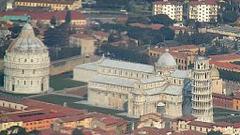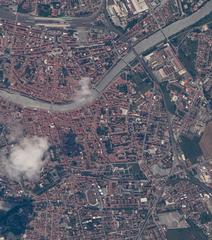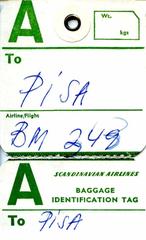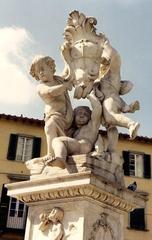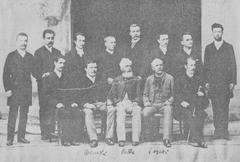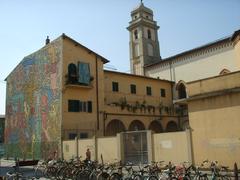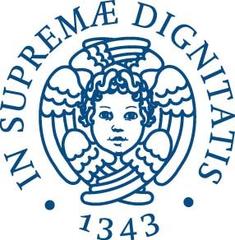Visiting Porta San Pietro: History, Tickets, and Tips
Date: 18/07/2024
Introduction
Table of Contents
- Introduction
- Historical Background and Significance
- Architectural Features and Style
- Visitor Information
- Travel Tips and Nearby Attractions
- Accessibility
- Special Events and Guided Tours
- Porta San Pietro Today
- FAQs
- Conclusion
Historical Background and Significance
A Gateway to Medieval Pisa
Porta San Pietro was a crucial entry point during medieval times. It controlled access to a vital waterway that connected Pisa to the Mediterranean Sea, making it a critical point of defense and trade.
Construction and Evolution
- 12th Century - The initial phase, dating back to the 12th century, saw the erection of a simple gateway. This structure marked the southern entrance to Pisa’s urban core.
- 13th Century - As Pisa’s power and prosperity surged, the gate underwent significant transformation. Master builder Ricolfo di Cambio spearheaded the construction of a new, fortified gate featuring two imposing towers flanking a central archway.
- 16th Century - Further modifications took place under Medici rule. Architect Giuliano di Sangallo oversaw renovations to enhance the gate’s defensive capabilities, including the addition of a ravelin, a triangular fortification positioned in front of the main gate.
Architectural Features and Style
Porta San Pietro, constructed in the latter half of the 16th century, showcases the Late Renaissance style, known as Mannerism. This period succeeded the harmonious balance of the High Renaissance with a more dramatic and playful approach.
Mannerist Influences
- Asymmetrical Layout - The gate’s design deviates from traditional symmetry, featuring an off-center archway flanked by differing elements, creating dynamic tension.
- Exaggerated Features - Exaggerated elements such as rusticated stonework in the lower section and tall, slender columns add verticality and grandeur.
- Decorative Details - Elaborate ornamentation includes the sculpted coat of arms of the Medici family, military trophies, and a Latin inscription commemorating the gate’s construction.
Structure and Materials
- Main Archway - A single, grand archway provides passage through the city walls, constructed using the classical Roman arch design.
- Flanking Structures - The archway is flanked by distinct structures—one massive and fortress-like, the other open with slender columns, contributing to the Mannerist aesthetic.
- Building Materials - The gate is primarily constructed using brick and stone, with decorative features adding elegance and grandeur.
Visitor Information
Visiting Hours
Porta San Pietro is accessible to visitors year-round. While the gate itself is an open structure, nearby attractions and guided tours have specific operating hours. Please check the official Pisa tourism website for the latest visiting hours.
Ticket Prices
There is no fee to visit Porta San Pietro itself. However, guided tours and nearby attractions may have associated costs. It’s advisable to check with tour operators or the official site for current ticket prices.
Travel Tips and Nearby Attractions
Getting There
- By Air - The closest airport to Pisa is Pisa International Airport (PSA), located about 4 kilometers (2.5 miles) from the city center. From the airport, you can take a taxi, bus, or train to reach Porta San Pietro.
- By Train - Pisa Centrale is the main train station in Pisa, well-connected to major Italian cities like Florence, Rome, and Genoa. From the station, Porta San Pietro is a pleasant walk of approximately 20 minutes. You can also opt for a bus or a short taxi ride.
- By Car - While driving within the city center is generally discouraged due to restricted traffic zones (ZTL), if you’re arriving by car, it’s best to park outside the city walls and explore the historical center on foot. Several parking options are available near the train station and around the city walls.
Best Time to Visit
Pisa enjoys a Mediterranean climate with hot summers and mild winters. The best time to visit is during the shoulder seasons, spring (April-May) and fall (September-October), when the weather is pleasant and the crowds are smaller. Summer (June-August) can get crowded and hot, while winter (November-March) might be chilly and rainy.
Nearby Attractions
- Leaning Tower of Pisa - Just a short distance from Porta San Pietro, this iconic structure is a must-visit.
- Piazza dei Miracoli - Explore the cathedral, baptistery, and cemetery in this historic square.
- Arno River - Enjoy a leisurely stroll along the riverbank, offering picturesque views and a glimpse into Pisa’s maritime past.
- National Museum of San Matteo - Located in a former Benedictine monastery, this museum houses an impressive collection of medieval art, including paintings, sculptures, and illuminated manuscripts.
- Tuttomondo Mural - This vibrant mural by renowned street artist Keith Haring is a must-see for art enthusiasts. Located near the train station, it depicts themes of peace, harmony, and hope.
- Botanical Garden of Pisa - Established in 1544, this is one of the oldest botanical gardens in Europe. It features a diverse collection of plants from around the world, including medicinal herbs, aquatic plants, and exotic species.
Accessibility
Porta San Pietro is accessible to most visitors, although some parts of the surrounding area may have uneven terrain. It’s advisable to wear comfortable walking shoes and check accessibility options if needed.
Special Events and Guided Tours
Guided tours often include Porta San Pietro as part of a broader exploration of Pisa’s historical sites. Special events, such as medieval reenactments and cultural festivals, occasionally take place near the gate. Check local event listings for more information.
Porta San Pietro Today
Today, Porta San Pietro stands as a well-preserved relic of Pisa’s medieval past. While no longer serving as a functional city gate, it offers a captivating glimpse into the city’s rich history and architectural prowess. The gate’s strategic location provides visitors with picturesque views of the Arno River and the surrounding cityscape.
FAQs
Q: What are the visiting hours for Porta San Pietro?
A: Porta San Pietro is accessible year-round, but nearby attractions and guided tours have specific hours. Check the official Pisa tourism website for details.
Q: Is there an entry fee for Porta San Pietro?
A: There is no fee to visit the gate itself, but guided tours and nearby attractions may have associated costs.
Q: What are some nearby attractions to Porta San Pietro?
A: The Leaning Tower of Pisa, Piazza dei Miracoli, and the Arno River are all nearby attractions worth exploring.
